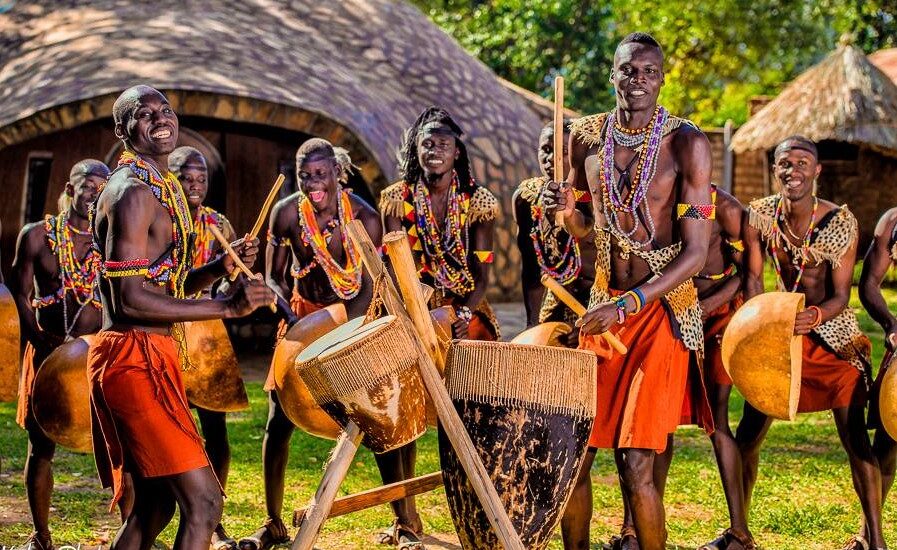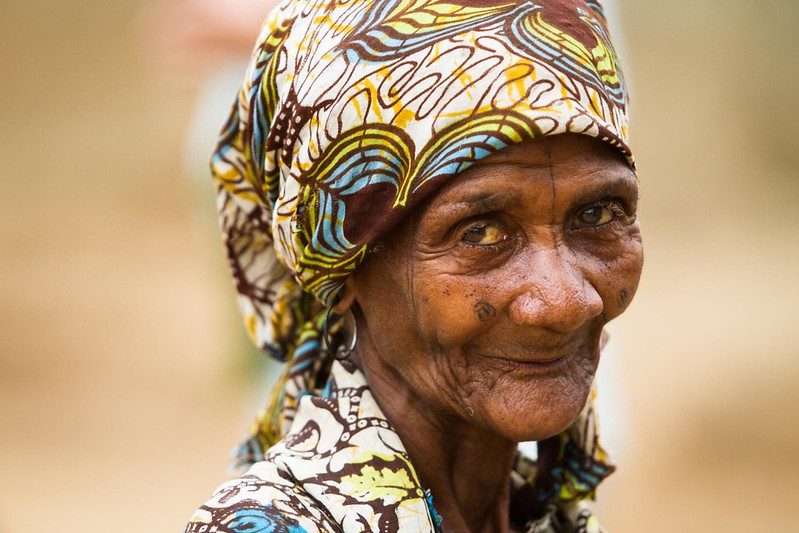How to get to Semuliki National Park – Sempaya Hot Springs. Semuliki National Park is…
Ugandan Food | Uganda Food | Food In Uganda
Many visitors to Uganda for business or Uganda safari tours have a range of food-related issues and hence have a number of inquiries such as: “What do they eat in Uganda?” What is Ugandan food like? What are Ugandan beverages like? Apart from intercontinental dishes, there are a variety of Uganda traditional foods you should try during your visit, as well as a variety of authentic organic Uganda Fruits/Fruits that will undoubtedly be a delicacy native to Uganda and not found anywhere else in the world. We have attempted to provide answers to these questions below in order to provide you with enough knowledge about Food in Uganda as you prepare for your African safaris in Uganda.
What Do Ugandans Eat? | What Is Ugandan Food Like?
During your Uganda safari, one of the pearls that will improve your love for this beautiful tiny country is its food.
Ugandan cuisine tastes unusual. While similar food may be available abroad, it does not necessarily taste as good as it does in Uganda. This is all thanks to Uganda’s excellent weather and fertile soils, which drive the country’s economy.
People in various regions of Uganda cultivate a variety of food, including grains, cereals, tubers, and fruits that grow abundantly and all year.
![]()
Many of Uganda’s favorite crops were introduced by outsiders, namely the British and Asians (especially Indians). Uganda’s traditional food is thus the product of influence not just from Ugandans but also from strangers.
Initially, Indians from the Indian Ocean’s coastal districts visited Uganda as merchants in the 1800s. They brought their own food to Uganda, namely wheat flour and rice.
The Indians brought these dishes to the Ugandans with whom they interacted. As time passed, there was a need for rice, just as there was for wheat flour, and the trade began.
In addition, British explorers, missionaries, and colonial authorities imported their cuisine and culinary techniques to Uganda. As of today, its effect may be found everywhere. It has evolved into a way of life.
The Following Are Some Traditional Ugandan Foods.
Although many tribes in Uganda have their own specialty cuisines, Ugandan food is often starch-heavy. Traditionally, starch is derived from;
- Matooke (green banana, cooked and mashed)
- Posho (cornmeal/maize)
- Millet (a ugali-like food produced from millet in the country’s north, west, and east)
- Cassava
- Yams
- sweet potatoes
![]()
Traditional Ugandan recipes are typically based on a sauce/stew of;
Groundnuts (peanuts), beans, meat, chicken, and fish (tilapia and Nile perch are popular).
Luwombo, a spicy stew boiled in banana leaves, is a popular traditional cuisine.
Katogo, which means “mixture of ingredients,” is a typical Ugandan morning meal.
Malewa is a traditional bamboo stalk dish from eastern Uganda (Bugisu).
Grasshoppers, also known as Nsenene, are a popular delicacy in some regions of Uganda from March to April and October to December.
Many Ugandan dishes also include vegetables such as
- cabbage
- Onions
- Tomatoes
- pumpkins
![]()
Uganda’s Tropical fruits include
Avocados, Watermelons, Pineapples, Mangoes, Passion Fruits, Papayas, Oranges, and other fruits and vegetables
Traditional Ugandan Foods to Try During Your Visit
Matoke
Matooke would not be at the bottom of a list of Ugandan cuisine. Uganda’s national food, matoke (steamed and mashed green bananas), is popular in the country’s central and western areas. In fact, you haven’t visited Uganda unless you’ve had Matoke.
Rice and potatoes are consumed, but matoke comes out on top. Ugandans, particularly those in central Uganda, do not have a pleasant day until they eat a lot of Matoke. It is estimated that each individual consumes 243 kg of matooke each year. This equates to around 0.6 kilograms each day.
In central Uganda, it is not uncommon to hear the word food used to refer to matooke. According to Buganda folklore, one of the first acts of the first man, Kintu, was to plant a matoke tree for his successors to enjoy.
In Uganda now, there are approximately 50 types of bananas. Not all bananas are cooked; some are eaten raw when ripe, while others are used to make local beers (Mwenge) and wines (Mubisi). In remote locations, a few matooke plants are all that is required to provide all of one’s food needs.
The matooke for cooking is the green-skinned kind that may be found on the roadside or in the store. Matoke occurs in the form of long green fingers in bunches and clusters. They are peeled, wrapped in banana leaves, and cooked for nourishment.
When steamed, it becomes yellow, and it is then mashed and served hot. Matooke, coupled with modest quantities of rice, pumpkin, beans, peanut, fish or meat stew, and some greens, is frequently the main meal.
Rolex
A Uganda Rolex is a chapatti topped with a fried egg omelet, tomato, onion, and cabbage. It may also include additional substances.
The name “Rolex” comes from the procedure of making it, which involves rolling the chapati and the omelet together.
It is one of Uganda’s most popular and least expensive fast snacks, particularly in urban areas. The Rolex is easy to create, and street sellers make them right in front of your eyes at their kiosks. It may be consumed at any time of day, including breakfast, lunch, and dinner.
This dish arose from the resourcefulness of a chapati seller in the Busoga region and then expanded to Wandegeya near Makerere University in Uganda, spurred by students who needed a quick supper owing to time and money restrictions.
Luwombo
Luwombo is a meal that genuinely represents Uganda. It’s traditional Ugandan cuisine, one of the classic dishes perfected by the Baganda people of central Uganda for more than a century.
The Luwombo is a stew/paste that is made in banana leaves and steamed to generate a highly appealing scent. It is frequently prepared with chicken, beef, smoked salmon, goat meat, mushrooms, or peanut paste, as well as chopped vegetables, salt, and water.
The time and expertise required to prepare this meal, as well as the manner it is served and wrapped in banana leaf like a gift, make it extremely memorable.
Historically, this meal was reserved for pre-colonial Buganda’s monarchs and princes.
The meal was invented around 133 years ago by Kabaka (King) Mwanga of the Buganda Kingdom’s personal chef around 1887.
The Luwombo was then served to kings, princes, Kabaka leaders, and significant visitors to the Kabaka. Luwombo is now mostly offered at traditional wedding ceremonies and during holidays.
Posho
Posho is a popular side dish in Uganda. It may be described as a hot white cake!
Posho, on the other hand, is just fine, white maize/corn flour completely combined with hot water in a pot and continually stirred until hard. It’s one of those dinners that sticks to your ribs and keeps you feeling full for a long time.
Because it is served in portions, the name posho is derived from the word portion. The dish is typically served with a bean, beef, peanut, chicken, or goat stew.
Maize flour is sometimes combined with cold water before being added to boiling water to make white porridge for breakfast.
Katogo
Katogo is a typical Ugandan morning meal, and if you eat it for breakfast, you won’t need to eat anything else for the rest of the day.
Katogo is a concoction of substances. Katogo’s major components are matooke and sauce (beef, offal, and beans).
Katogo was first thought to be a poor man’s food. Katogo was created by combining chopped cassava with beans.
Matooke was eventually introduced by the upper class to replace cassava. It is presently provided as breakfast at a number of hotels and restaurants.
Groundnut
Many Ugandan dishes are enhanced by groundnut sauce.
It is a creamy sauce prepared from ground sweet red peanuts or ground nuts.
They can be eaten on their own or in combination with smoked fish, smoked pork, or mushrooms.
The sauce is frequently accompanied by steaming matooke, rice, pumpkin, potatoes, and other Ugandan dishes. This is a vegetarian-friendly meal.
Ugandan Fish
You may have had fish from all over the world, but if you haven’t tried fish from Uganda’s lakes, you haven’t had the best.
Uganda is a tiny country in comparison to most African countries, yet water bodies cover 26% of its geographical area. Lakes such as Victoria, Kyoga, George, Edward, and Albert are home to a variety of fish. The most frequent fish harvested in Uganda are tilapia and Nile perch. A Nile Perch may weigh up to 200 kilograms.
Others are silverfish, which are mostly consumed in Uganda’s central and eastern areas. In Uganda, catfish and tigerfish are also fished. You can have your supper as deep-fried fish with veggies or stewed fish with food for a sauce.
Muchomo
Muchomo is another Uganda cuisine to sample in your Uganda gourmet experiences. It refers to different types of roasted meat, such as;
Beef, goat’s meat, and chicken
Mchomo is derived from the term “kuchoma” in Kiswahili, which means “to burn or roast.” Several people usually queue on the streets in the evening, preparing various types of meat for mchomo.
Mchomo like the flesh of Ankole cattle and goats because it is more tasty and softer.
Chapati
Chapati is Uganda’s main bread. Chapati stands may be found in almost every town in Uganda. Chapatis are made using wheat flour, baking powder, salt, and water; they are then stretched out into a pastry crust and frequently cooked in a tiny quantity of oil to thicken.
Once prepared, chapatis may be used for a variety of purposes. You may eat them on their own, with beans or soup, or even with tea.
Chapattis were introduced to Uganda by Indians. Chapati is now considered the classic Ugandan street meal. It is quite popular among both Ugandans and foreigners.
The Grasshoppers (Nseenene)
Nsenene is a little bug akin to a bush cricket that is one of the odd delicacies available in Uganda.
The Ugandan fried Nsenene delicacy has been likened to eating crispy chicken skin.
![]()
How are they getting ready? When making Nsenene, there is no butchering. They are cooked alive after having their wings, antennae, and legs removed.
Nseenene was traditionally harvested by children and women in Buganda. They were subsequently handed to the women’s spouses in exchange for a new Gomesi (traditional women’s attire).
Women were obliged to undertake the dangerous labor of gathering Nsenene in the woods, but they were never allowed to taste it.
It was thought that ladies who consumed Nseenene would have offspring with malformed skulls similar to Nseenene’s. Nseenene is now eaten by women in Buganda.
This favorite food is only available during the rainy season. In Uganda, there are two Nseenene seasons: March to April and October to December.


